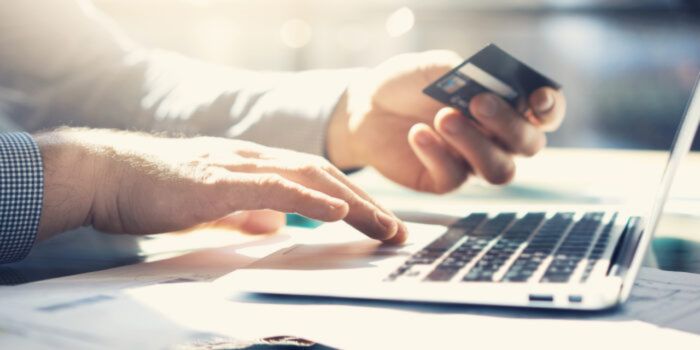Unless your idea of banking is stuffing the proceeds of your paycheck under your mattress or rolling up dollar bills and placing them inside of a coffee can that you keep on the kitchen counter, the chances are that you have online or digital banking capabilities available to you from your bank or credit union.
According to the statistical data consolidation site Statista.com, there are 161.6 million digital banking users in the U.S. as of 2019. If you are not one of them, you might be wasting time and money.
Online banking is the most convenient way to monitor your checking and savings accounts, transfer money from one account to another, and pay your bills. You can have your paycheck automatically deposited in the account of your choice if you also set up a direct deposit at work. You will rarely need to step foot in a bank again for everyday banking transactions.
Common Online Banking Features
- Account Summaries. If you have multiple accounts with your credit union or bank, you will be able to see the current balances of each account, making it easy to check if funds are running low or if you have the necessary cash available to make a purchase.
- Transaction Histories. Whether you are a heavy debit card user or check writer, you will be able to view individual transactions for your accounts and be able to tell when the birthday check you sent to a niece or nephew gets cashed or when your paycheck hits your account.
- Account Statements. Electronic account statements make sense for most people, and they are eco-friendly. Instead of sticking them in your desk drawer, unopened, you can access them online when you need them.
- Transfer Funds. Running low on cash? Most online banking platforms allow you to transfer funds from one account to another, making it easy to stash excess cash in interest-earning savings accounts until it is needed.
- Mobile Deposit. Did your aunt or uncle send you a check as a birthday present? Did you get a nice tax refund from the IRS? Mobile deposit services make cashing it easy and convenient by taking a picture of it from your smartphone.
- Online Bill Payment. You might get out of the habit of writing and tracking checks altogether. Monthly payments to the cable, gas and electric companies, and mortgage and auto lenders become a breeze. Plus, you will save on postage.
- Alerts and Notifications. Without even checking your accounts, you can set things up to automatically receive your account balance via email or text, or receive a notification when for debit card transactions or your account balance gets low.
- Account Reporting Tools. If you are interested in understanding how much you are spending each month dining out or for entertainment, you can likely find out from your online banking provider.
That’s to name a few. Online banking features are ever-expanding and growing to make life even more convenient. From tracking your credit score to re-ordering checks and opening new accounts, banks and credit unions are attempting to expand the services available to their customers.
Access Anywhere
Consumers have migrated internet use more and more from their desktop computers to their smartphone or tablet devices. Digital banking has followed. Most banks and credit unions have expanded account access through direct apps that you can download to these devices, making it easier to access your account information at any time and from any place.
Safety First
Of course, you will have to practice smart Internet skills if you participate in online banking. You cannot do much to stop a widespread hack of your accounts. Unfortunately, that can happen.
To start, you can protect your accounts by choosing strong passwords. You want your password to be one that you can easily remember but that no one else would guess. It is best to include letters, symbols, and numbers in your password. Be sure not to use easy-to-guess passwords such as the street on which you live or your birth date.
Most banks and credit unions offer even more sophisticated ways of protecting your digital banking experience.
- Multi-Factor Authentication. In addition to your account password, you will also be required to provide alternative forms of authentication, either via a PIN or code texted to your smartphone.
- Biometric Authentication. This expands the identification process to a unique biological characteristic, such as facial recognition or finger prints.
Digital banking has transformed the consumer experience for most bank and credit union customers. It has altered the design of and use of branches and reinvented the financial world.
© Fintactix, LLC 2021




